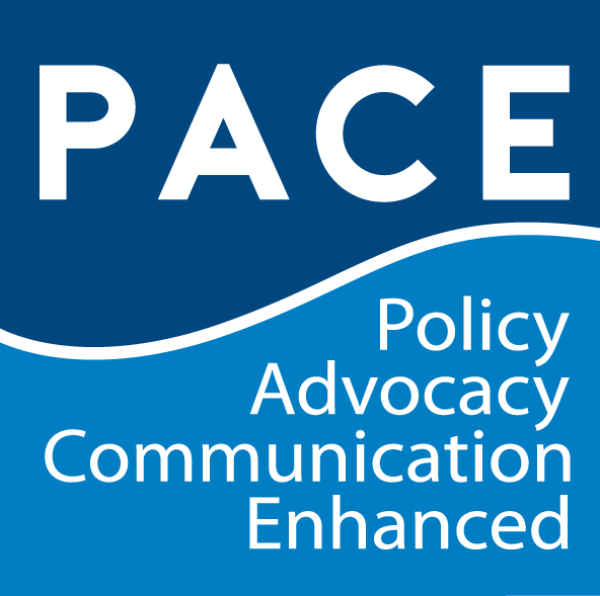Leaders in Narok County recently made a bold change to their allocation of health funds in a way that prioritizes services for family planning and reproductive, maternal, newborn, child, and adolescent health (FP/RMNCAH) across all pillars of the health budget. This type of increased financial commitment from county leaders is a significant step forward in the context of Kenya’s devolved setting.
Journalists from Kenya, Uganda Win Women’s Edition Story Contest
Two journalists – Carol Natukunda of the New Vision newspaper in Uganda and Joyce Chimbi of the Kenya-based African Woman and Child Feature Service – are the winners of a 2018 Women’s Edition story contest. Theirs were among 17 submissions from the 2018 group of Women’s Edition participants who produced print and broadcast stories using PRB travel grants awarded in June through August. All of the submissions were judged based on six criteria: depth and rigor of reporting, quality of writing, accuracy, originality, inclusion of a policy perspective, and overall interest. Each won a cash prize of $750.
Here are links to Carol Natukunda’s stories in PDF:
Will Uganda achieve its 2020 family planning target?
Here are links to Joyce Chimbi’s stories:
Contraception ignored in HIV prevention efforts across East and Southern Africa
Kisumu schools Adopt-a-Cop to end defilement
Unmet need for postpartum family planning unacceptably high, experts say
Afya Uzazi: Improving Health and Environment in Nakuru County
Integrated Challenges, Integrated Solutions
Afya Uzazi (“healthy parenthood” in Kiswahili) is a five-year project funded by the United States Agency for International Development and implemented by a consortium of partners. It aims to improve access to FP/RMNCAH services and address the underlying connections to natural resources, livelihoods, and household well-being.
Among its activities, the project applies a well-known community development approach called Population, Health, and Environment (PHE), which uses integrated activities to cut across different but related sectors, such as reproductive health, primary health, and natural resources management, to reinforce the interconnected nature of the difficulties communities face.
Integrating Population, Health, and Environment for Sustainable Development in Kenya
- Video: 26 minutes (MP4: 284MB)
- Video without narration (ZIP: 206MB)
- English Script ( PDF: 669KB)
- English Presentation Guide (PDF:3.1MB)
- English Key Messages (PDF:2.9MB)
- Standard ENGAGE Country User Guide (PDF:624KB)
(November 2017) “Integrating Population, Health, and Environment for Sustainable Development in Kenya” is a new ENGAGE presentation that serves as an advocacy tool to promote integrated population, health, and environment (PHE) approaches, and the value of family planning/reproductive health (FP/RH) investments by decisionmakers in health and nonhealth sectors, such as natural resource management and conservation.
The presentation highlights many of Kenya’s development successes, including the national climate change strategy and national population policy. Breaking down complex concepts and using nontechnical language, the presentation shows the connections between people’s access to FP/RH information and services, their health, and their reliance on natural resources. The presentation connects the impacts of FP/RH access for households, communities, and the country, drawing on examples of successful PHE efforts in Kenya.
Stakeholders from diverse sectors within Kenya will use this resource to promote a policy dialogue about the critical role of population dynamics with health and the environment, and the ways that investments in FP/RH can propel progress towards Kenya’s many development goals. The presentation includes recommendations for civil society, and national and county leadership.
“Integrating Population, Health, and Environment for Sustainable Development in Kenya” is available with English and Swahili voiceovers and in an unnarrated format. It can be downloaded from the PRB website or viewed via PRB’s YouTube channel. On the PRB website, the video is accompanied by a key messages handout and a user’s guide, which offer guidance on how to effectively deliver the presentation.
This ENGAGE presentation was developed by the PACE Project in collaboration with Kenya’s National Council for Population and Development (NCPD) and an ENGAGE task force made up of Kenyan experts in the fields of health, FP/RH, conservation, and PHE.
With funding from the U.S. Agency for International Development, PACE—Policy, Advocacy, and Communication Enhanced for Population and Reproductive Health (PACE)—increases support among policy audiences for effective health and population programs around the world. By increasing the flow of accurate, understandable information about population, family planning, and reproductive health to policy audiences, PACE enhances efforts carried out by civil society, the public sector, the development community, and donors. Under PACE and previous projects, PRB has developed a series of dynamic multimedia ENGAGE presentations to engage global leaders and country-level policymakers in issues related to family planning, reproductive health, and other key development issues.
Family Planning and Reproductive Health in Kenya
The PACE Project, in collaboration with Kenya’s National Council for Population and Development (NCPD), produced a new data sheet with findings from the 2014 Kenya Demographic and Health Survey (KDHS). For the first time ever, this survey collected data at the county level, reflecting Kenya’s recent government decentralization.
The data sheet includes figures that explain national data for married women ages 15 to 49 on the demand for contraception that was satisfied, use of or intention to use contraception, and the most popular sources of contraception. In addition, the data sheet highlights other indicators related to family planning and reproductive health, including teen pregnancy, family planning messages, and sexual violence. A large data table includes county, regional, and national indicators such as population, education and literacy, pregnancy and fertility, sexual knowledge and practices, and maternal health.
The data sheet is a valuable tool to policymakers, advocates, and public health planners interested in the status of family planning and reproductive health in specific counties in Kenya, or at regional or national levels.
Family Planning and Kenya’s Progress Towards the Sustainable Development Goals
Family planning is a cross-cutting intervention that can accelerate progress towards achieving the Sustainable Development Goals (SDGs). In Kenya, family planning is a best buy that contributes to the nation’s growth and creates a path towards achieving the SDGs and Kenya’s Vision 2030.
Developed in partnership with the National Council for Population and Development (NCPD) and with generous support from USAID Kenya and East Africa through the Policy, Advocacy, and Communication Enhanced for Population and Reproductive Health (PACE) Project, PRB has created a short video that demonstrates how family planning contributes to Kenya’s progress across all five SDG themes of People, Planet, Prosperity, Peace, and Partnerships. The video will be shared with policymakers throughout Kenya to enhance their understanding of the importance of family planning to realizing the SDGs.


